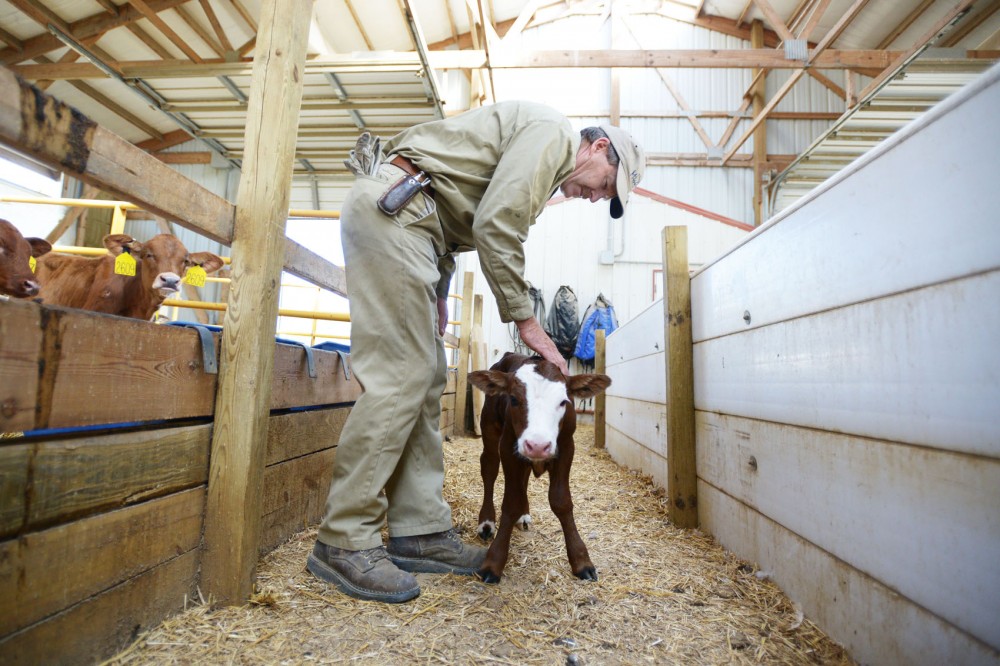Minnesota dairy farmer Dave Buck laughs at the thought of the U.S. Congress passing the 2012 Farm Bill before its looming Sept. 30 deadline.
At this time of year, he and other farmers are already making planting decisions for next year. But without a Farm Bill passed, and with much of the state facing drought-like conditions, these decisions are harder to make.
Every five years, Congress passes a bundle of legislation on conservation, food, nutrition and farming. It is known as the Farm Bill, but only 23 percent of its funding goes to farms.
If Congress doesn’t pass the 2012 Farm Bill by the time parts of the old one expire at the end of the month, it will revert back to the “permanent” 1949 Farm Bill.
Robert Craven, director of the University of Minnesota Center for Farm Financial Management, echoed farmers across the state who have little confidence that Congress will complete it in time.
“Expectations are pretty low that they’re going to get anything done,” he said.
Both houses of Congress have been attempting to pass the bill for several months. Each managed to pass a version this summer but then failed to agree on a final version.
If the 2008 bill does expire, crucial components like the Milk Income Loss Contract program and the Wetlands Reserve Program will expire with it.
Greg Schwarz, a corn and soybean farmer from Le Sueur, Minn., said the members of the Minnesota Corn Growers Association just want the bill passed.
“There’s some of us that are more than frustrated and just hopeful that something gets done,” he said.
The drought
Dairy farmers have been hit especially hard by the drought, which has driven feed prices up, making it more expensive to feed their cows.
Bob Lefebvre, executive director of the Minnesota Milk Producers Association, said increased feed prices affect everybody, not just farmers.
“We have increased feed costs,” he said, “and that’ll get passed on to the consumers.”
For the most part, Minnesota’s farms recovered from the drought last spring and summer, but nearly 84 percent is abnormally dry again.
This will mean low soil moisture to start next growing season, which was why the state was in a drought last spring.
The worst hit are the southwest and northwest corners of the state, which the U.S. Drought Monitor has designated as areas in severe drought.
The cows
Buck said he had to buy feed last year to have enough for his 500 cows, though he’s usually able to grow enough on his 950-acre farm, “Buck’s Unlimited,” in Goodhue, Minn.
Each cow requires about 1,000 pounds of feed for the winter, according to the University of Minnesota Extension.
He said he’s had more rain than most this year.
“We got [rain] at just the right time,” Buck said. “We were fortunate.”
This year, they planted corn and alfalfa. Buck said the corn had a “good ear on it,” which is crucial for the quality of the feed.
In drought conditions, corn can grow without an ear at all, causing nitrogen to build up, which can be harmful to cows.
Buck said he named his farm because there was already another dairy-farming David Buck in Minnesota. His wife, Ann, said it was also because they had so many children — six.
Ann helped a calf drink some milk from a bottle the day it was born. It could already stand on its own.
They estimated the calf was born five weeks premature and was as small as it could be and still live.
With the recent challenges presented by Farm Bill delays and dryer-than-usual conditions, he said he has come to think of “Buck’s Unlimited” in a different way.
“I guess it shows a lot of optimism,” he said.








